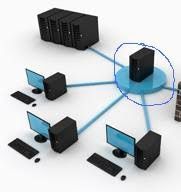Step 1. PC users: If you are running WinXP Home, you can use Microsoft's Remote Desktop software or install a free VNC server like TightVNC. WinXP Pro and Windows Vista or later have Remote Desktop Connection built into it. Simply right-click on "My Computer", select "Properties" and click on the "Remote" tab. Check the box to enable remote access.
Mac OS X users: Macs have a remote screen sharing program built in. If you want to share your Windows desktop from your Mac, download Microsoft's Remote Desktop Connection software for Mac OS X.
Step 2. Sign up for a domain name service like DynDNS, which lets you assign an easy-to-remember name (adrienne.is-a-geek .net, for example) to your home connection's ever-changing IP address. For in-depth instructions, see our article Set Up Dynamic DNS.
Step 3. Configure port forwarding on your home router to allow remote access. Check your router's user manual for directions, or visit your router's page on portforward.com for specific instructions. Don't have a router? Try a web-based app like LogMeIn. Note: the default port for Remote Desktop on Windows XP is 3389.
Step 4. If you don't want to use the operating system's remote desktop software (mentioned in Step 1), install a VNC viewer on the remote machine instead. For Macs, try JollysFastVNC. For PCs, TightVNC's viewer component is good. Now simply enter your home computer's domain name and you're in!
Step 5. Remember: VNC isn't secure. If you're worried about eavesdroppers, ask someone even geekier than us to help you set up an encrypted SSH tunnel. Doug Bowman has an informative article about setting up SSHTM on a Mac. We recommend running your remote desktop through a non-standard port and pick solid passwords. Beware: there are bots that try common usernames and passwords on public IP addresses.
Tuesday, February 2, 2010
Subscribe to:
Post Comments (Atom)

No comments:
Post a Comment